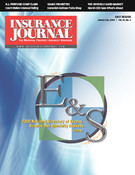Earlier this month, lawmakers in Maine and Delaware said they would consider restrictions on drivers’ cell phone use, but a national safety group says that the only sufficient limit to guarantee safety is a complete ban on the devices for drivers.
In Delaware, Rep. Joe Miro is making a second attempt to bar the drivers from using cell phone unless it is with a so-called handsfree device. The Pike Creek Republican is proposing a $50 fine for drivers who send text messages or e-mails, or speak on a handheld cell while driving.
Delaware State Police said cell phone use led to 214 crashes in 2007, with that number climbing to 252 last year.
Similar proposals are being offered in Maine, where proposed restrictions on cell phone use by motorists may be gaining traction both on the state and local levels. Four bills already filed in the newly seated Legislature would limit the use of cell phones by motorists. And in Bangor, the city’s government operations committee is preparing to discuss a possible ban on use of phones by drivers.
The Maine Department of Public Safety plans to be involved in the discussion. Spokesman Stephen McCausland wouldn’t go into specifics, but said “the basic thing we advocate for drivers is to drive.”
Maine and Delaware would be only the latest states – joining New York, Massachusetts, Connecticut and a host of others – to take up cell phone restrictions. In most states where bans exist, cell phone use is only allowed through hands-free devices.
Not Enough
But that may not be enough, the National Safety Council said last month.
The Council, which campaigned to get U.S. states to enforce seatbelt laws, is taking on cell phones, saying it is starting a campaign to ban all use of mobile phones while driving.
Even so-called hands-free devices should be banned because studies show they do not make it any safer to talk on the telephone while driving, the group said. But several recent studies have shown drivers are far more distracted when speaking on a mobile phone, even with a speaker or headset, than talking to a live passenger.
“It’s time to take the cell phone away,” said Janet Froetscher, president and chief executive officer of the nonprofit group. “Studies show that driving while talking on a cellphone is extremely dangerous and puts drivers at a four times greater risk of a crash.”
Many states and Washington, D.C. have laws requiring the use of a hands-free device while driving and using a cellphone.
Last month Dave Strayer of the University of Utah and colleagues demonstrated that drivers using a hands-free device drifted out of their lanes and missed exits more frequently than drivers talking to a passenger. Strayer’s team has also shown that drivers using mobile telephones are as impaired as drivers who are legally drunk.
A study from the Harvard Center of Risk Analysis estimates that cellphone use while driving contributes to 6 percent of crashes. Froetscher’s group says that translates to 636,000 crashes, 330,000 injuries and 2,600 deaths in the U.S. each year.
“When you’re on a call, even if both hands are on the wheel, your head is in the call, and not on your driving,” Froetscher said. “Unlike the passenger sitting next to you, the person on the other end of the call is oblivious to your driving conditions. The passenger provides another pair of eyes on the road.”
Calling Governors
Froetscher said her group would call governors and legislators and ask them to ban all use of cellphones while driving. She is confident the group can get states to change their laws.
“We have been through this before with seatbelts, with drunk driving. We do research. When the research demonstrates that something is very dangerous and we can save lives, we educate the public about it. We educate legislators about it,” she said in a telephone interview.
John Ulczycki, a spokesman for the group, said it was behind the “Click it or Ticket” campaigns that have helped states enforce seatbelt laws.
Ulczycki said his group, which helps run court-ordered driver safety education courses, was also working with the wireless telephone industry. “Some people suggest and you might hear the argument that there might be a lot of things that are distracting in a vehicle and why are you picking on a cellphone?” he said.
He cited data from the International Association for the Wireless Telecommunications Industry that show there are 270 million wireless telephone subscribers in the United States, and more than 80 percent admit to using a cellphone while driving.
“There are over 100 million people engaged in this behavior,” Ulczycki said.
“There may be other things that people do in their cars that are more dangerous than talking on cellphones. I think one of the most dangerous thing people do is turn around in their seats. But we don’t have 100 million people doing that regularly for hours a day.”
Material from the Associated Press and Reuters wire services was included in this report.
Topics USA
Was this article valuable?
Here are more articles you may enjoy.


 Baldwin Group to Buy CAC Group for About $1B in Cash and Stock
Baldwin Group to Buy CAC Group for About $1B in Cash and Stock  Swiss Re Shares Drop After New Profit Target Falls Short of Expectations
Swiss Re Shares Drop After New Profit Target Falls Short of Expectations  One of Highest Property Claims Severity Recorded in Q3 on Low Volume, Says Verisk
One of Highest Property Claims Severity Recorded in Q3 on Low Volume, Says Verisk  Pierce Named CEO of GEICO as Combs Resigns
Pierce Named CEO of GEICO as Combs Resigns 


